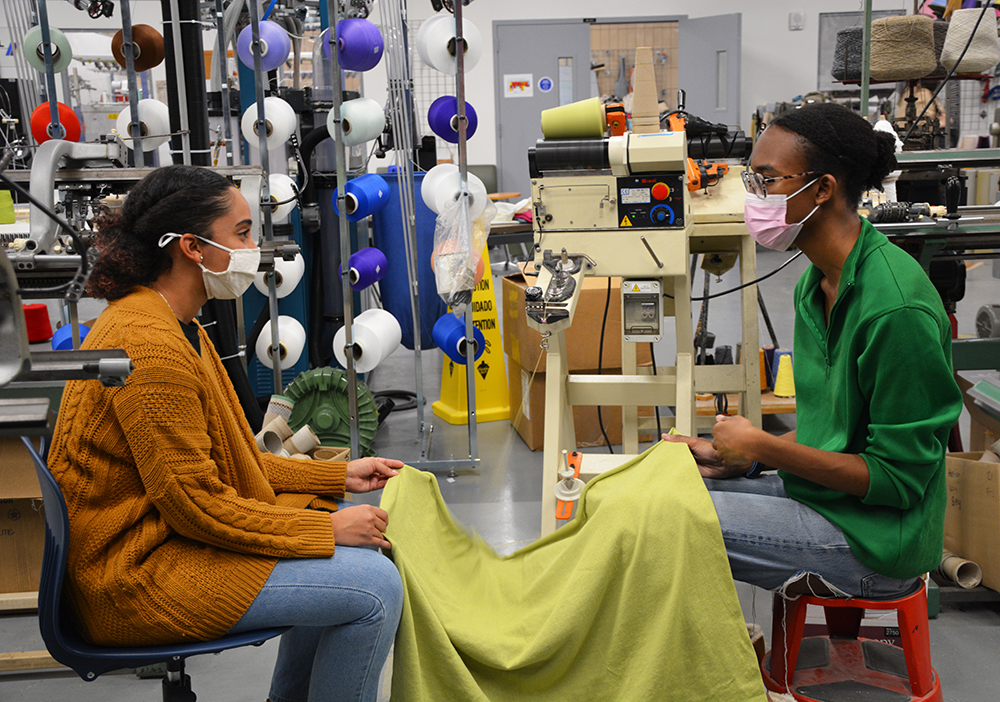Fiber Analysis/
Comparative Fabric Study

Faculty members and students in the Textile Development and Marketing (TDM) Department teamed up in the fall 2021 semester on a comparative fabric study. The goal: to investigate the beneficial properties of cotton used in knitted winter wear, compared with more common insulating fabrics like wool and acrylic. TDM faculty members Dr. Imran Islam and Dr. Ajoy Sarkar, with assistance from retired professor Jeffrey Silberman, enlisted the aid of TDM students in the Knit Product Development course in their junior year. This course teaches technical principles of weft knit structures, including how stitch formation, fabric construction, yarn selection, and knitting machinery intersect with and affect aesthetics, mechanical performance, cost, and sustainability of knit fabrics. Furthermore, students’ knitting knowledge is bolstered as they learn the practical application of knitted structures used in garments in current markets and their supply chain—e.g., how these methods affect material sourcing, knitwear production, and product delivery. The project team applied for and received a Cotton in the Curriculum grant from Cotton Incorporated, “to further understanding and knowledge about cotton among students preparing for careers in apparel, textiles, or the merchandising of textile products.” The grant aligned with the TDM course and research team’s goal to establish how cotton yarn can compare against traditional winter wear yarns.
In the lab, 18 students constructed various fully fashioned knit structures using Dubied flatbed manual knitting machines. These are hand-powered knitting machines capable of knit, purl, tuck, and miss stitches—with each type of stitch representing a variation on the structure of the stitch and resultant pattern of a fabric. Although typically used for acrylic yarns, the lab activities were designed to evaluate opportunities for using more cotton fibers in knitted winter wear. Students knit five different structures (1×1 Rib, Half Cardigan, Full Cardigan, Half Milano, and Full Milano) using four yarn types (100% cotton regular yarn, 100% cotton de-knitted (crimped) yarn, 100% wool, and 100% acrylic). Subsequently, the researchers compared the performance of the yarns in each knit structure for use in knit winter wear, including the ability of the crimped cotton yarns to provide temperature insulation by trapping air.



